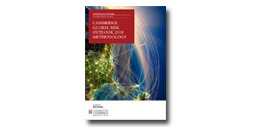Overview
The City Risk Index 2015-2025 presents the first ever analysis of the economic output risk (GDP@Risk) in 301 major cities from 18 man-made and natural threats over a 10-year period.
The Index finds that a total of $4.6 trillion of 301 cities’ projected GDP is at risk from all threats – out of a total projected GDP between 2015 and 2025 and $375 trillion.
Highlights
The analysis identifies three important emerging trends in the global risk landscape:
- Emerging economies will shoulder an increasing proportion of risk-related financial loss as a result of their accelerating economic growth – more than 70% of Total GDP@Risk is associated with emerging economies, with their cities often highly exposed to single natural catastrophes. Earthquake threat alone represents more than 50% of both Lima and Tehran’s Total GDP@Risk, for example.
- Manmade threats are becoming increasingly significant. Market crash, cyber attack, power outage and nuclear accident alone are associated with almost a third of Total GDP@Risk. Market crash puts the most GDP@Risk globally – representing nearly a quarter of all cities’ potential losses.
- New or emerging threats – cyber attacks, human pandemic, plant epidemic and solar storm – are also having a growing impact. Together, they represent nearly a quarter of Total GDP@Risk.
Supporting publications

Analysis
An overview slide presentation of the context, methodology, and results from the World Cities Risk 2015-2025 research track.

Atlas
Online maps of World Cities 2025, containing interactive city data, threat hazard mapping, and results for the world’s most important 301 cities.

Part One – Overview and results
This report presents the first analysis that assesses the combined damage inflicted on global cities by a comprehensive set of significant and recurrent threats.

Part Two – Methodology
Part two of a report that presents the first analysis that assesses the combined damage inflicted on global cities by a comprehensive set of significant and recurrent threats.
Acknowledgements
The Cambridge Global Risk Index was developed by the research team at the Centre for Risk Studies, which was made possible by project funding provided by Lloyd’s.


